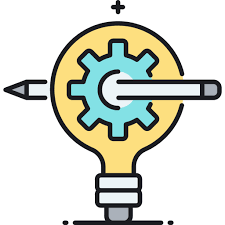Micro economics is a subfield of macro economics that focuses on the action of individuals and firms within a market. It cannot be considered to be a subfield of macroeconomics, though, because micro economics attempts to study the short-term aspects of the economy. For example, a micro-economic analysis of the rising trend of college attendance would focus on how colleges are making students feel more secure about their future and what they are getting out of going to school. In contrast, macroeconomic concepts like unemployment, inflation, budget deficits, and balance of payments would be studied in the context of whole-economy macroeconomics.
Micro economic concepts are frequently studied alongside macroeconomics in macro policy research. The existence and strength of macro policies can be predicted by studying microeconomics. For instance, if a macro policy is designed to stabilize the unemployment rate, then by analyzing micro economics, the unemployment rate can also be predicted. This is why many people often find themselves reading macroeconomics when it has nothing to do with the stock market, financial markets, or the national budget.
When it comes to understanding what is happening in the economy at the macro level, micro-economic analysis helps make sense of the data. As is the case with any form of physical science, the facts are usually very difficult to interpret given the statistical nature of the data. However, the existence of a body of knowledge known as macroeconomics helps make sense of things and this research can in turn help provide information that can guide policy makers in the right direction.
One important aspect of macro economics is the concept of the macro scale. Economics has been called the science of the size problem. The existence of a macro scope, which encompasses all macro aspects, is what makes macroeconomics extremely powerful in providing the data that is necessary for economic decision making. The concept of macro economics is best explained through an example. Say, if a company is manufacturing a particular item, then the demand for that product, which includes both consumers and producers, can be analyzed via macroeconomics.
Micro economic concepts are crucial for analyzing the variables that make up the macro economic environment. Micro-economic variables include such things as consumer spending, investment, output, production, technology, government, distribution, price level, etc. These variables affect macro-economic processes and decisions. This can be illustrated through an example. Say, given a company produces widgets, the company can be analyzed via micro economic means; for instance, if a consumer decides to purchase one widget, and another consumer decides to purchase two widgets, both purchases will have a profound effect on the company’s output.
With the advent of computers and other technological breakthroughs, many macroeconomic concepts have grown more simplified and easier to understand. Computers have also revolutionized how markets and companies are evaluated via macroeconomics. With the increase in technological advancements, the scope of micro-economic systems has grown as well. Additionally, because of globalization and integration, macro economics has come to understand the intricacies of international trade and the effects that it has on a country’s overall macro economic health.
A macro economics degree program prepares students for careers in macro, market, and economic research, as well as macroeconomic policymaking. Some programs require a year or two of core courses in advanced mathematics, while other programs may only require one or two semesters. The number of units required in a macro economics degree program is based on the programs, courses taken and the concentration desired. For example, a one-year program may require twenty credits while a two-year program may require forty credits.
